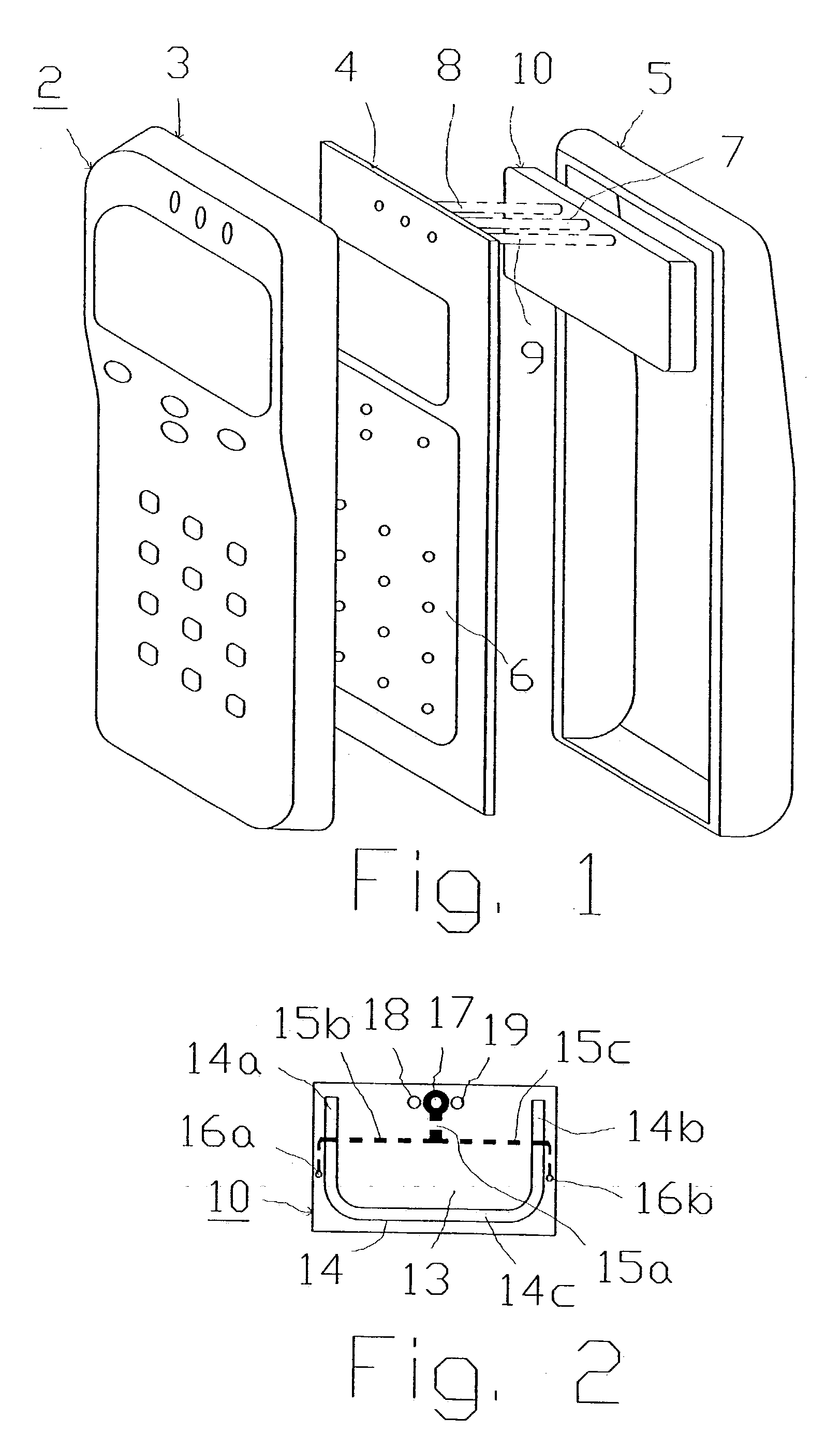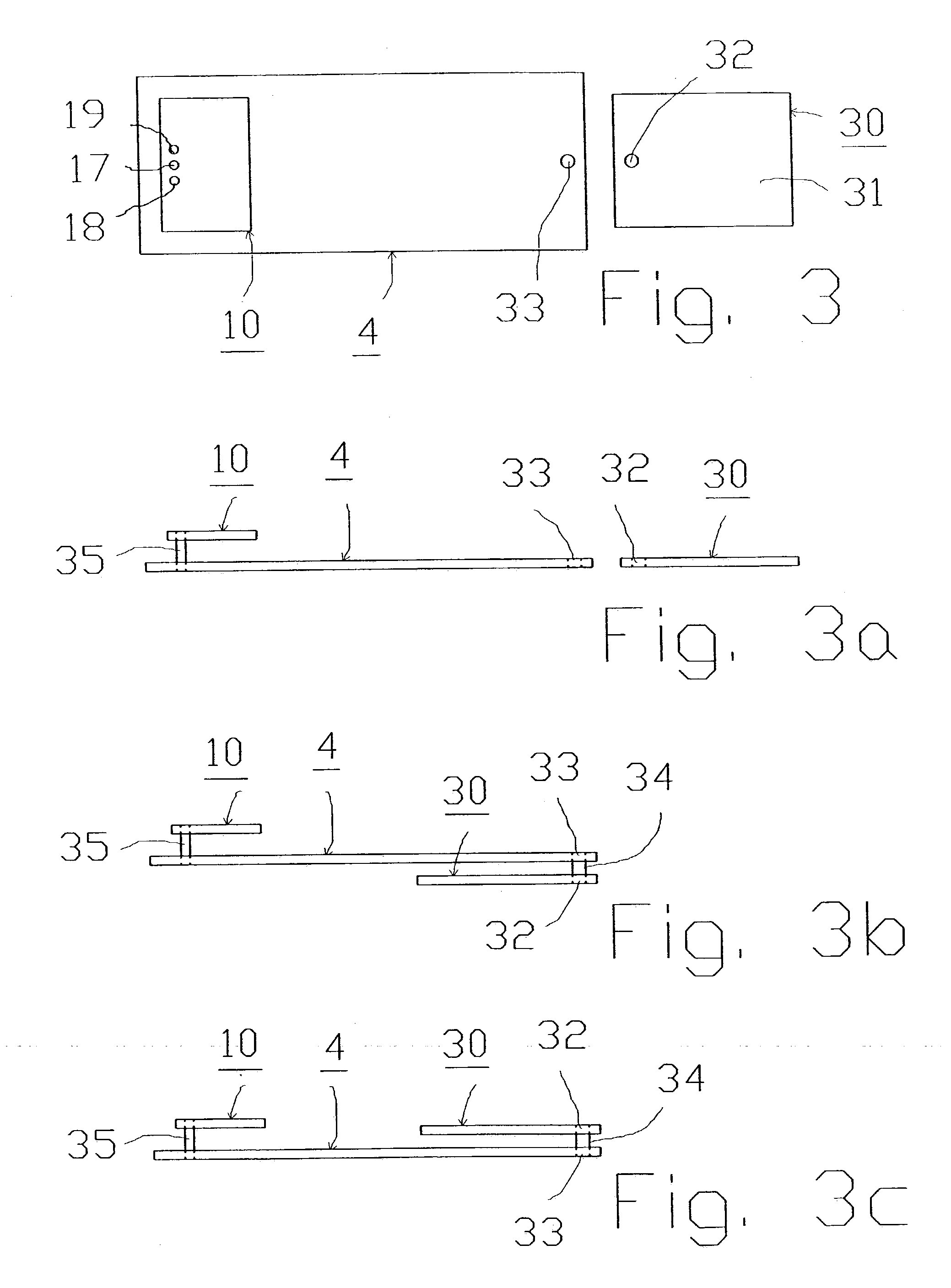Apparatus and method for enhancing low-frequency operation of mobile communication antennas
a mobile communication antenna and low-frequency operation technology, applied in the direction of antennas, antenna supports/mountings, transmission, etc., can solve the problems of reducing the efficiency of small antennas, and requiring higher power supply, so as to enhance the operation efficiency and bandwidth of antennas, and enhance the operation efficiency of such antennas
- Summary
- Abstract
- Description
- Claims
- Application Information
AI Technical Summary
Benefits of technology
Problems solved by technology
Method used
Image
Examples
Embodiment Construction
[0030] With reference first to FIG. 1, there is illustrated one form of mobile communication apparatus constructed in accordance with the present invention, including a housing, generally designated 2, constituted of a front cover 3 and a back cover 5. Within housing 2 is a printed wired board (PWB) 4, sometimes referred to as a printed circuit board (PCB), which includes all or a part of the communication circuitry, generally designated 6, of the apparatus. PWB 4 is formed with a signal terminal indicated at 7, and with an electrically-conductive ground connected to ground terminals 8, 9 for the communication circuitry. The ground may be a continuous conductive layer serving as a ground plane, or may be one or more conductive strips serving as a ground for individual components of the communication circuitry.
[0031] In the apparatus illustrated in FIG. 1, terminals 7-9 are on the underlying surface of PWB 4 and face an internal antenna, generally designated 10, covering a portion of...
PUM
 Login to View More
Login to View More Abstract
Description
Claims
Application Information
 Login to View More
Login to View More - R&D
- Intellectual Property
- Life Sciences
- Materials
- Tech Scout
- Unparalleled Data Quality
- Higher Quality Content
- 60% Fewer Hallucinations
Browse by: Latest US Patents, China's latest patents, Technical Efficacy Thesaurus, Application Domain, Technology Topic, Popular Technical Reports.
© 2025 PatSnap. All rights reserved.Legal|Privacy policy|Modern Slavery Act Transparency Statement|Sitemap|About US| Contact US: help@patsnap.com



